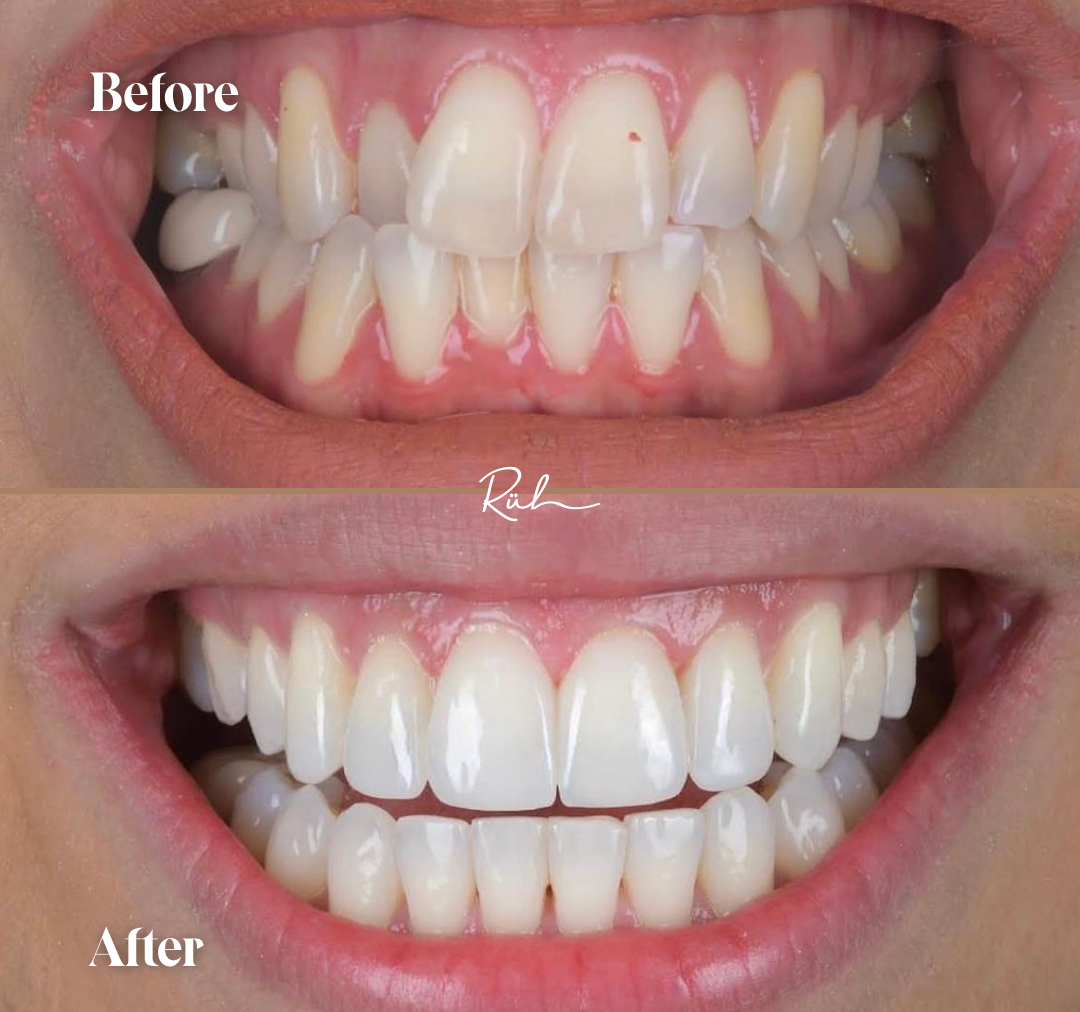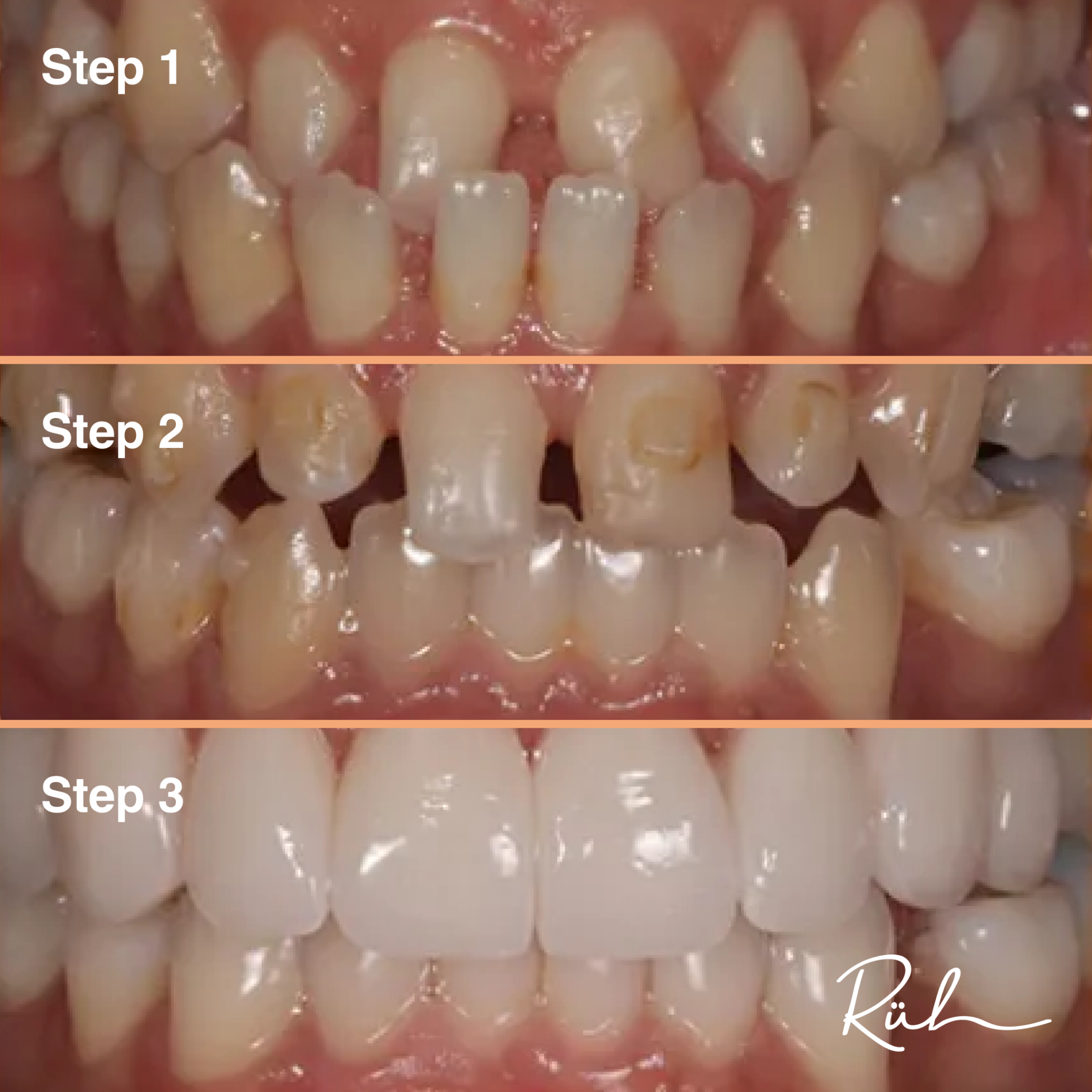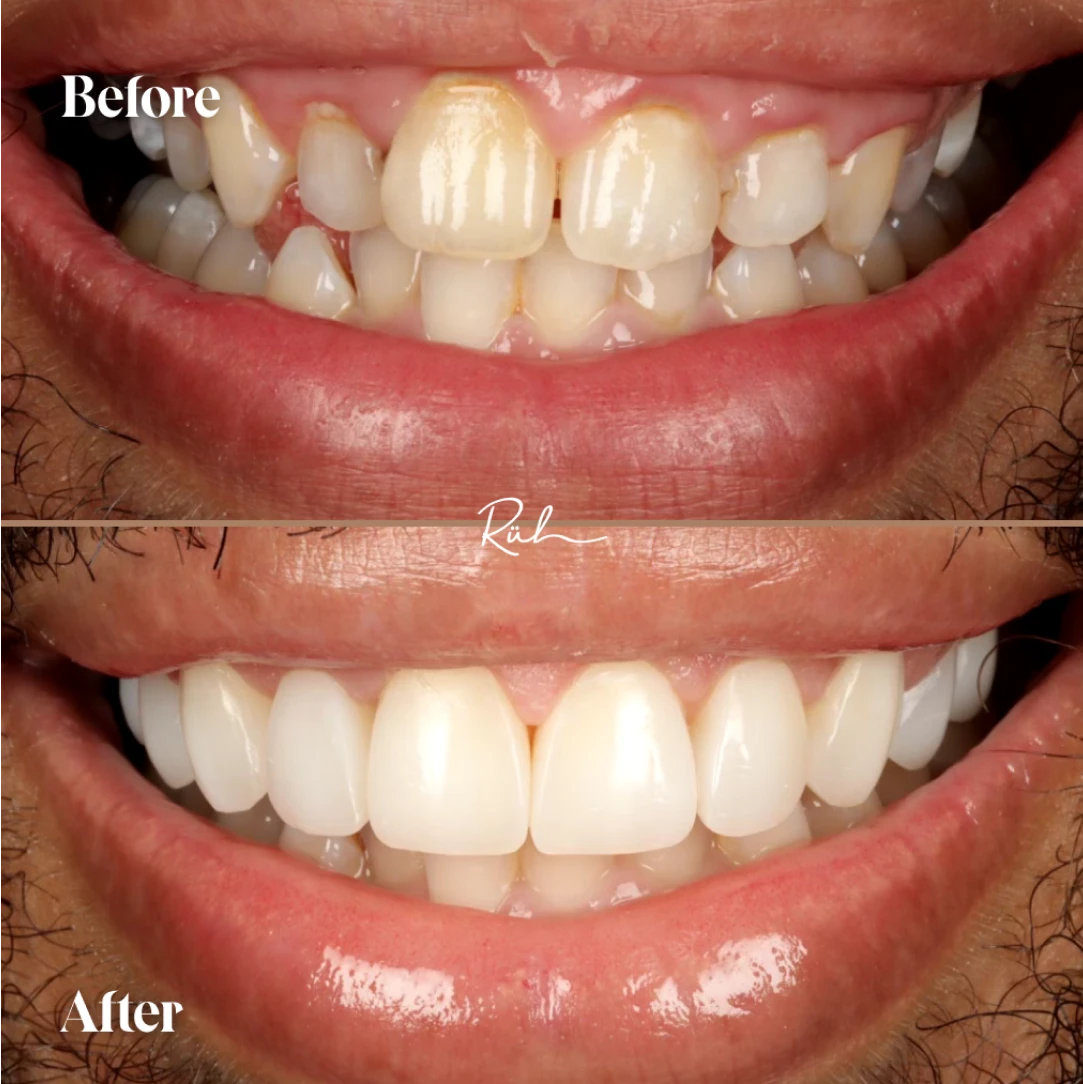Experience the Ultimate in Smile Perfection and Confidence
Invisalign Aesthetic
Enhancements
After Invisalign, composite bonding and porcelain veneers enhance your smile. Composite bonding uses tooth-colored resin to fix chips, gaps, or discoloration. Porcelain veneers are custom-made shells covering the front of teeth for a durable, flawless look.
Google rating score of 4.8 of 5, based on 350+ reviews
0%
FINANCE OPTIONS
Evening and Weekend
APPOINTMENTS
Free
CONSULTATIONS

Invisalign and composite bonding
Combining Invisalign with composite bonding provides a complete solution for achieving a perfect smile. Invisalign’s clear aligners discreetly straighten teeth, while composite bonding uses tooth-colored resin to fix chips, gaps, and discoloration. Together, these treatments create a seamlessly aligned and naturally enhanced smile.
Invisalign and porcelain veneers
Combining Invisalign with porcelain veneers offers a comprehensive solution for a flawless smile. Invisalign’s clear aligners discreetly straighten your teeth, while porcelain veneers cover the front surface to correct imperfections like chips, gaps, and discoloration. Together, these treatments ensure a beautifully aligned and polished smile.

Composite Bonding vs. Porcelain Veneers
- Composite bonding and porcelain veneers are both popular cosmetic dental treatments, but they differ in materials, durability, and application.
- Composite bonding uses a coloured resin to fix minor imperfections such as chips, gaps, and discolouration, and is typically quicker and less expensive.
- Porcelain Veneers are thin, custom-made shells that cover the front surface of the teeth, providing a more durable and stain-resistant solution for more significant cosmetic improvements.
- Both treatments can enhance your smile, but the choice depends on the extent of the needed corrections and your long-term goals.
Invisalign Aesthetic Enhancement Process
Once the Invisalign treatment is complete, then you will be ready for the composite bonding or porcelain veneer treatment
- This then involves removing the attachments and beginning a short course of whitening to ensure all teeth are now a uniform colour. This can take typically 2 weeks and is done from the comfort of your own home.
- Once the whitening is allowed to settle for a week, then the composite bonding procedure can then take place.
- This usually takes 3-4 hours depending on how many teeth need treating. Once the process is completed a set of retainers are made to then hold the teeth in position and ensure the composite bonding is protected overnight.
The process is exactly the same for porcelain veneers, except there is an additional appointment required for tooth preparation before the fit usually a couple of weeks later
before and after



Composite Bonding and Porcelain Veneers FAQ
What is composite bonding?
Composite bonding is a cosmetic dental procedure that uses tooth-colored resin to repair minor imperfections like chips, gaps, and discoloration in teeth. It’s a quick and effective way to enhance your smile.
What are porcelain veneers?
Porcelain Veneers are thin, custom-made shells that cover the front surface of teeth. They are used to correct more significant cosmetic issues, providing a durable and stain-resistant solution for a flawless smile.
How long do composite bonding and porcelain veneers last?
Composite bonding typically lasts 5-7 years, while <span><a style=”color:#CFAB8A !important;” href=”/porcelain-veneer-treatment/”>Porcelain Veneers</a></span> usually last 10-15 years, depending on care and maintenance.
Are the procedures for composite bonding and porcelain veneers painful?
Both procedures are minimally invasive and generally painless. Local anesthesia may be used for added comfort during the veneer procedure.
How many visits are required for each procedure?
Composite bonding is typically completed in one visit. Porcelain veneers usually require multiple visits for impressions, custom fabrication, and fitting.
How do I care for my teeth after getting composite bonding or porcelain veneers?
Care for both by maintaining good oral hygiene practices, including brushing, flossing, and regular dental check-ups. Avoid biting hard objects and limit foods and drinks that can stain.
Can composite bonding or porcelain veneers be repaired if damaged?
Yes, composite bonding can be repaired relatively easily. Porcelain Veneers, however, may need to be replaced if they are chipped or cracked.
Which option is more resistant to staining?
Porcelain Veneers are highly resistant to staining, while composite bonding can stain over time, especially if exposed to foods and drinks like coffee, tea, and red wine.
How much do composite bonding and porcelain veneers cost?
Composite bonding is generally less expensive than Porcelain Veneers. The exact cost varies based on the extent of the work and the dentist’s fees.
Which option is better for significant cosmetic changes?
Porcelain Veneers are better suited for significant cosmetic changes due to their durability and superior aesthetic quality. Composite Bonding is ideal for minor repairs and enhancements.






